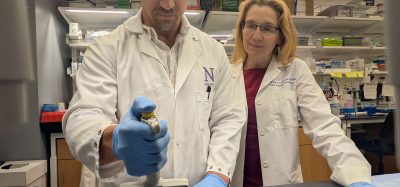Scientists create world’s first “totally edible” battery
Posted: 21 April 2023 | Grace Galler | No comments yet
Researchers at the Istituto Italiano di Tecnologia have created the world’s first rechargeable edible battery.


Showcasing their latest project, a team of researchers at the the Istituto Italiano di Tecnologia (IIT-Italian Institute of Technology) have created a “totally edible” and rechargeable battery.
The group has said that the materials involved are not normally consumed as part of a human diet and they state that their innovation could be applied to health diagnostics, food quality monitoring and edible soft robotics.
Led by Mario Caironi, Coordinator of the Printed and Molecular Electronics laboratory of the IIT Center in Milan; the study group looked at the electronical properties of food and its by-products. This research was carried out so the scientists could unite these properties with edible materials and create new edible electronic materials.
Back in 2019, Caironi received a €2 million ERC consolidator grant for the ELFO Project, which explores the edible electronics field.
“Edible electronics is a recently growing field that could have a great impact on the diagnosis and treatment of gastrointestinal tract diseases, as well as on the food quality monitoring,” said the researchers.
“One of the most interesting challenges in the development of future edible electronic systems is to realize edible power sources”
The research group took inspiration from biochemical redox reactions and developed a battery that utilizes riboflavin (vitamin B2, found for example in almonds) as an anode and quercetin (a food supplement and ingredient, present in capers, among others) as a cathode.
The researchers then used activated charcoal to increase electrical conductivity, while the electrolyte was water-based. The separator (something needed in every battery to avoid short circuits), was made from nori seaweed. Then, electrodes were encapsulated in beeswax from which two food-grade gold contacts (the foil used by pastry chefs) on a cellulose derived support come out.
The battery cell operates at 0.65 V, a voltage that the researchers say is “low enough not to create problems in the human body when ingested”. It can reportedly provide current of 48 μA for 12 minutes, or a few microamps for more than an hour, something they claim is enough to supply power to small electronic devices, such as low-power LEDs, for a limited time.
“Future potential uses range from edible circuits and sensors that can monitor health conditions to the powering of sensors for monitoring food storage conditions,” explained Caironi.
“Given the level of safety of these batteries, they could be used in children toys, where there is a high risk of ingestion. We are already developing devices with greater capacity and reducing the overall size. These developments will be tested in the future for powering edible soft robots,” concluded Caironi.
Related topics
Related organisations
Istituto Italiano di Tecnologia (IIT-Italian Institute of Technology)









